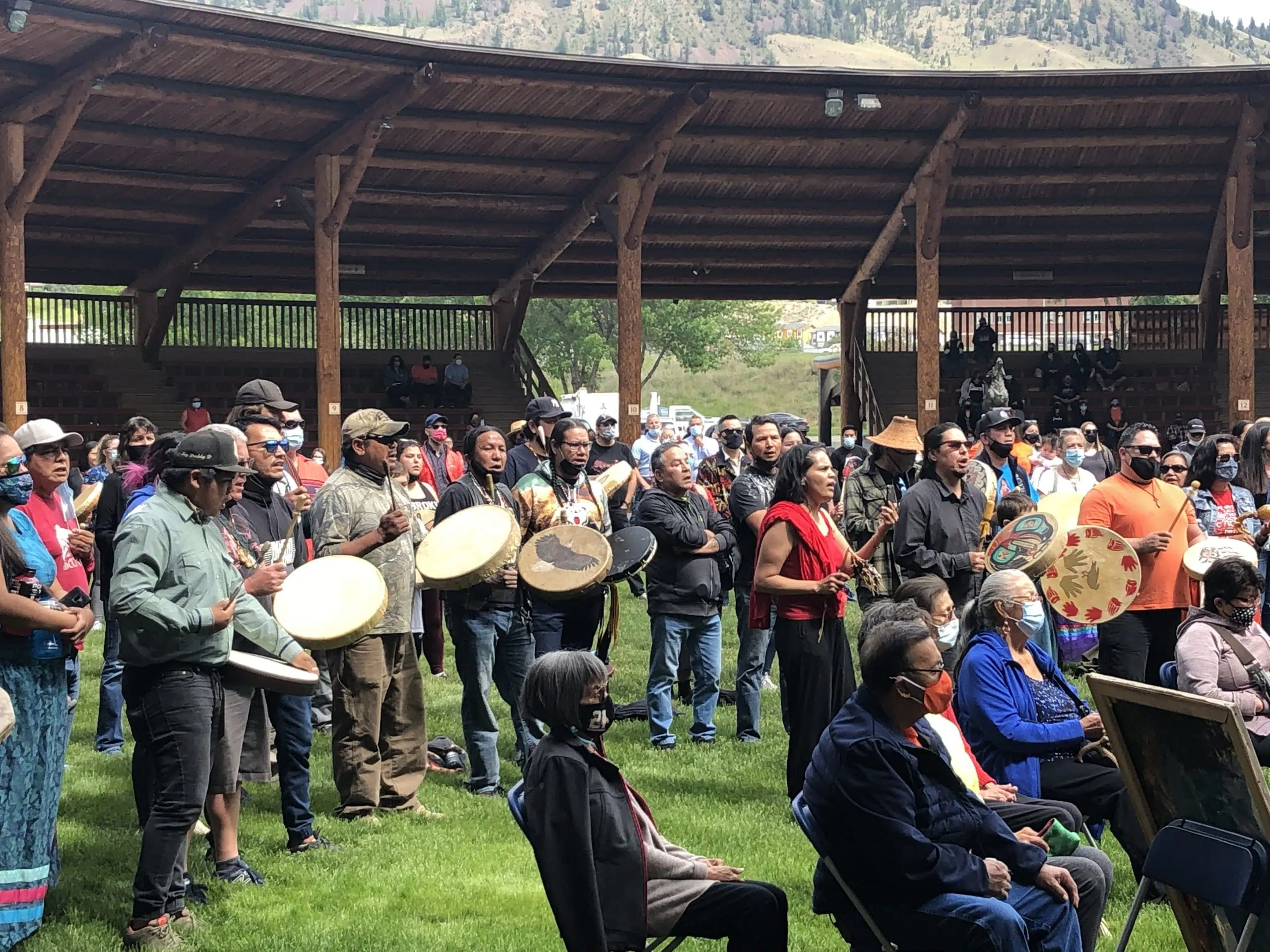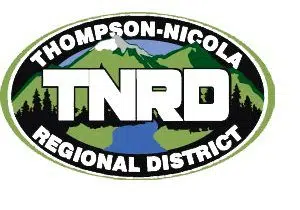
More than 200 people from the Secwepemc nation filled The Arbour on the Tk’emlups Indian band today to commemorate 215 children whose remains were found nearby.
Many wore orange to support people impacted by the residential school system. In all, people gathered for well over an hour, drumming and singing with grief counsellors also on site.
At one point, residential school survivors in attendance were asked to sit in a circle, which totalled more than three dozen people.
One of the people at the ceremony was Ammo Oppenheim, a member of the Coldwater Indian Band. She says she spent “eight years of hell” at the Kamloops Indian Residential School.
“There’s a lot of sadness. A lot of sadness. And you can pick it up from people. And I’ve seen some of my friends I went to school with. About 15 to 20 of them who I went to school with at the same time, here. Just seeing them, and just giving them a nod, because we know that we’re here for a reason.”
Oppenheim says even today, she looks at the residential school building and cringes, noting she hasn’t even told her kids about the trauma she faced there.
“My daughter worked in part of that building over there for a while, but it was on the boys side, which was good because I never went on the boys side (laughs). But I very seldom walk on the girl’s side. Memories would come like flashbacks, just so fast, and then by the time I’d leave there, somebody would drain me. Drain me of whatever happiness I was feeling.”
Also present in Kamloops was Gayle Frank, a member of the Bridge River Indian Band near Lillooet, who brought her kids to the ceremony.
She says her mom and dad were taken from their home community when they were five and six years old, respectively, and sent to the residential school in Kamloops.
“So we grew up outside of our nation, and it’s heartbreaking, trying to find that cultural connection and that cultural identity to our home nation. It’s really hard when we don’t feel that connection to the land. I’m starting to take language classes.”
Frank says people need to know the intergenerational traumas that residential schools have created.














